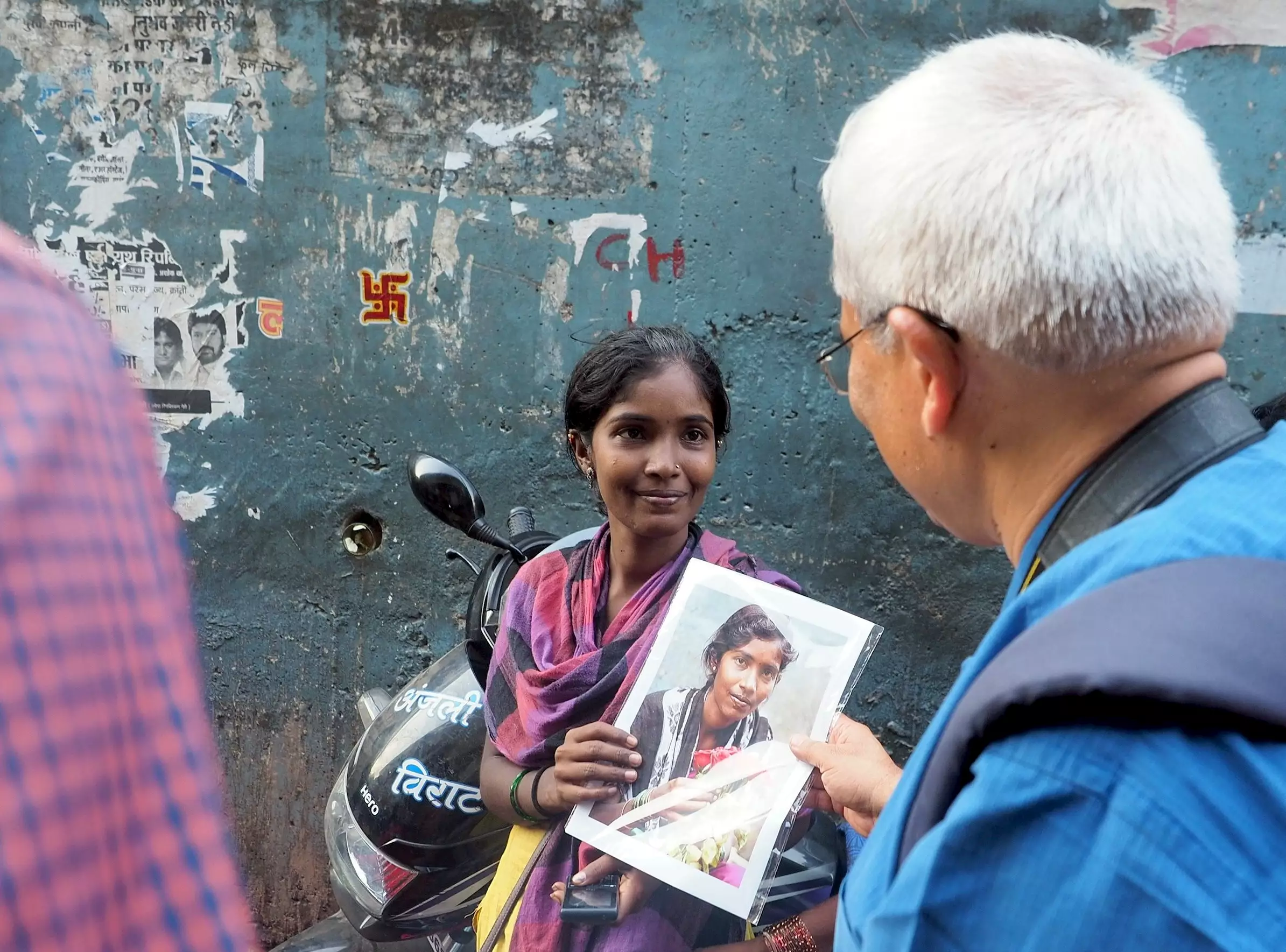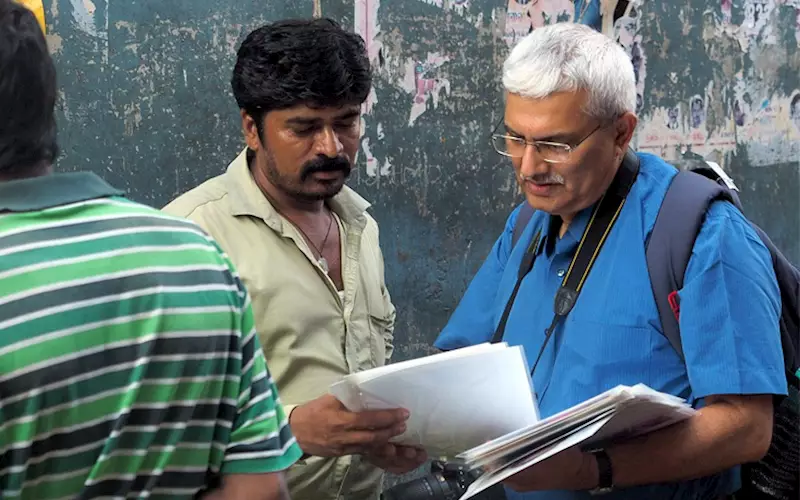Vimal Parmar: Finding a mojo in photography
Vimal Parmar, general manager, marketing, digital print media at TechNova Imaging Systems, combines his day job with his passion: photography, finding a way to marry his passion while promoting digital printing. In this conversation with Noel D’Cunha, Parmar shares his photography journey, and how it’s become an integral part of our lives now
21 Jun 2019 | By Noel D'Cunha
We all know you are a part of the TechNova team, but not many perhaps know about your photography skills. Tell us a little bit about your photography journey?
Well, it all started in school. My father had a120 format Adox folding film camera that I would borrow from time to time. And then when he moved to a 35mm Canon QL19, I moved with him too. He was a hobby photographer and encouraged me. Most of the inspiration, of course, came from old National Geographic magazines that we had in the school library. Subsequently, when I got into my second job, I invested in a Pentax ME Super. I was based in Delhi at that time and most of my weekends were spent going from one monument to the other making images.
And your first job at Vakil & Sons...
That was in the early 80’s, where I was exposed to what a saleable image was. Being in the process department, I got to see, over the three years, thousands of images that went into magazines, balance sheets, posters, greeting cards etc. I picked up composition just by observing these images. And of course, from all the second-hand magazines that I would purchase from the footpath near Hutatma Chowk. Also visits to the Jahangir Art Gallery whenever a photographer showcased work.
But it was your stint with Agfa Gevaert India (later, Allied Photographics India) which put you in touch with some of the finest photojournalists and pictorial photographers?
Yes. I learnt mainly by observation and reading. A short-term evening course at late T Kashinath’s (a renowned pictorialist, Padma Shree Awardee and then director of Photo Division in Delhi) helped me hone my skills in printing my own black and white pictures at home. Here, I would apply my printing knowledge of using high-contrast films and tints to create unconventional photo prints.
And of course, Technova...
At TechNova, 2002 onwards, I had the opportunity to learn about digital printing and various kinds of digital substrates that I could use as a hobby photographer. Even here, I met some of the finest photographers and print service providers, with whom I enjoy interacting and being exposed to some amazing images.
Was learning photography a challenge?
More than a challenge, it was fun. Curiosity to learn and striving to excel kept me going.

A turning point for you where everything you photographed clicked, and if so, what was it?
In the early 90’s when I had slowed down making images, for no particular reason, and then subsequently when I picked up my camera, I really found it difficult to visualize a frame. I had to put in the extra effort. It took time, but I got into the groove once again. I realised, it was more to do with practice. From then on, it was much better. My strike rate improved. I am not trigger happy. I am selective about frame selection.
What are the bits of advice you received stuck with you?
Some early advice came from people and some I picked up from books.
Late Kashinath would always stress on ICTOP – interest (is the picture interesting), composition, technique, originality and finally, presentation (this is where print comes in).
I remember a line from a photo magazine that said, “Be like a selective sponge, ready to absorb knowledge from any source” This quote was attributed to the then editor of Popular Photography magazine, Norman Rothschild.
What’s your photography style? Please describe
In my early years, I got to see a variety of photographs in magazines. I was impressed with slice-of-life kind of images. Also, my father’s work who as a hobby photographer, not only photographed family but a lot of travel-related images – monuments, and people in general. So, I kind of emulated him. Once he casually mentioned that only if I managed to get my pictures published that he would recognise my talent. So, I started working on it and managed to get some pictures published. My daughter was growing up around that time so it was mainly her pictures. A mix of everything basically. I had not found my calling. Just that I enjoyed making images. But I knew something was missing.
Late 90’s when we moved into Mumbai, I started taking pictures of the kaali-peeli taxis knowing that they would eventually be taken off the road. Along with pictures of just taxis I also photographed taxi drivers to make the story complete. That got me talking to them. Strike up a conversation. Initially to help me get a better picture. But I realised, it made both us feel good - just that conversation, that connect. It led to chatting up with street vendors and common people on the road. Taking their pictures. Sometimes sharing their images on my social media or sending across prints.
I have currently settled down with portraits, abstracts and food photography. And of course, I look forward to interacting with more and more street vendors, making their images and try and share prints with as many of them as possible.
What inspires you?
Inspiration is all around. Music (there are times when I hear some good music, I strongly feel like picking up my camera and start taking pictures), the energy in the streets, smell of freshly brewed coffee, texture on old walls, bold patches of colour, an old rusted sheet of iron, the smile on a strangers face, interiors of an old kaali-peeli taxi, kids splashing water on the road during monsoon, a flutter of hair on a girls face, rough palms of a manual labourer, people watching the setting sun at Marine Drive, work itself, a printed sheet at a customer’s place, just interacting with people, inter play of light and shadow late in the evening, nature, childhood memories, the human form, travel, movies, paintings, monuments, work of various photographers – right from old master onwards, the artistic manner in which food is served in a restaurant, the contours of a vehicle, rain lashing on window panes. The list could go on.
What is important is that these touch points create new references which eventually helps in making new images.

The photography gears you use, which is your favourite and why?
My Nikon DSLR, Sony Compact and my Motorola cell phone. I use all three.
However, on a planned shoot, I prefer to use my Nikon D7200 with 50mm f/1.8 which is my favourite for street portraits. I like the perspective of the 50 mm and the bokeh (the effect of a soft out-of-focus background that you get when shooting a subject) that I get with it. Also, it is good for low light and of course, ideal for portraits.
You are also a roadie... go car trekking, a recipe for picture-perfect travel images?
My wife, a cancer surgeon, and my daughter who works for a digital marketing company, are both into motorsports and fond of long distance drives. All our long road trips are with Mahindra Adventure. We have covered Kashmir to Kanyakumari, North East, Spiti, Bangkok to Guwahati via Myanmar, Kathmandu to Everest Base Camp in Tibet (via Lhasa) etc. And several places on our own, not necessarily by road.
How do you manage work and your hobbies?
When I am not on vacation, Monday to Friday its work, work and work. Sundays are with the family. So, it’s on some Saturdays that I hit the street – either alone or with friends. Otherwise, once a year we go on vacation for around two weeks. Most of my photography happens then.
Apart from this, shooting food is so convenient. Any interesting food that I eat any time of the day, gets captured on my mobile which is usually for my social media pages. In fact, I don’t get to photograph as much as I want to. But whenever I get time I make the most of it.
Have you exhibited or judged any photo competitions or any other achievements?
I have curated and moderated a panel discussion related to photography at The NCPA, Piramal Art Gallery along with a group exhibition in November 2018. I’ve also been featured in Smart Photography and Classic Imaging magazines.
Besides, I’ve been on the jury panel of Better Photography Wedding Photographer of the Year 2014-15; Smart Photography Award 2016 – The Most Prestigious Camera of the Year; and Shutter Bugs Creative Forum. A Dubai based photography group.
About 200 of my photographs are on display in patient rooms and wards of a hospital in Mumbai. These pictures have been donated by me.
Your advice or tips?
Photography is an integral part of our life now. Not only for pretty pictures but also for taking a quick snapshot either for documentation or remembering things or to communicate with someone visually. For example, an architect updating daily progress with clients. Moreover, digital cameras and mobile phones have made photography very easy to get technically correct images. So, spend some time and learn how to compose an image and carry out basic editing.
Print your images. It’s fun.
Visit a photo exhibition. Chat with the photographer to understand why a particular image was made. Join a local photo club. You will be amazed at the camaraderie and their willingness to help others to learn.
Moreover, photography can be a great stress buster too.
Note: Images taken by Shashi Dodderi.
These street vendors sell vegetables and flowers on the footpath outside Dadar station.
They had least expected prints in return – Vimal Parmar











 See All
See All